Chervil

Chervil (Anthriscus cerefolium) is a herbaceous annual plant. Belongs to the Umbrella family.
This plant has many names: openwork chervil, French parsley, zhurnitsa, kupyr, butenyl kupyr and snack. As is the case with other plants, the names of the plant change depending on the place of growth.
Titles in other languages:
- English - chervil,
- German Echter Kerbel or Gartenkerbel,
- fr. - cerfeuil des jardins.
Appearance
Chervil outwardly is very similar to parsley, but its leaves are carved openwork and slightly smaller in size than parsley.
The name "French parsley" is explained not only by the beauty of the leaves, but by the fact that chervil is part of the "bouquet garni" - a must when preparing broths in French cuisine.
Chervil has a delicate smell of anise and notes of tarragon, but the smell is not persistent and quickly disappears during heat treatment.
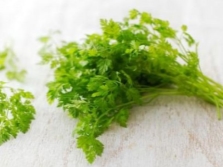


Chervil root resembles a small white carrot or parsnip. An adult plant has a dense rosette and can reach a height of 60 centimeters. Chervil fruits are two-seedlings, black with a purple tint. Seeds look like Christmas tree needles and remain viable for up to four years.
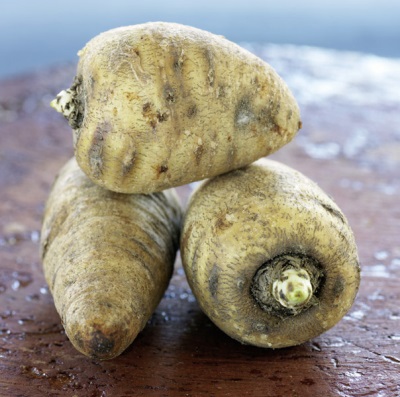
Kinds
There are about 20 plant species. It is believed that the name of the species cere folium comes from the merger of two Greek words: chaire - hello, phyllon - leaf. Such a beautiful name of the ancient Greeks was inspired by the pleasant smell of grass.The ancient Romans fully supported them and called this herb also.
The most famous modern names of varieties:
- ordinary,
- curly-leaved,
- dark green,
- smooth-leaved,
- double curly.

Where does it grow?
The homeland of chervil is considered to be the North Caucasus, the southern regions of the Russian Federation and Western Asia. It grows wild throughout Europe, the Middle East, as well as in the Rostov Region and the Krasnodar Territory. Chervil is also cultivated in Turkey, Ukraine and Moldova.

How to choose?
- Only young tender greens are used, collected before the plant blooms.
- Pay attention to the color of the leaves - they should be evenly colored in rich green.
- Leaves must not be damaged.
- The exhaled aroma should be gentle and pleasant with hints of anise.

Storage
It is best to store young chervil greens in a glass of water.
If there is a lot of greenery, you can wrap it in a damp towel and send it to the refrigerator. Greens are not stored for a long time, but under the right conditions, you can save it for a week.
If you decide to store chervil for the winter, it is best to freeze the greens.
Drying greens is not recommended, as it does not retain its properties when dried.

The nutritional value
Nutritional and energy value 100 gr. product
| Squirrels | Fats | Carbohydrates | Alimentary fiber | calories |
|---|---|---|---|---|
| 23.2 gr. | 3.9 gr. | 49.1 gr. | 11.3 gr. | 237 kcal |
Chemical composition
Young chervil greens are rich in phytoncides, minerals, vitamins A and C. Chervil rich in carotenoids is a powerful antioxidant
For a complete list of vitamins and minerals, see the table below:
| vitamins | trace elements | Macronutrients | |||
|---|---|---|---|---|---|
| Vitamin A (RE) | 293 mcg | Iron | 31.95 mg | Calcium | 1346 mg |
| Vitamin B1 (thiamine) | 0.38 mg | Zinc | 8.8 mg | Magnesium | 130 mg |
| Vitamin B2 (riboflavin) | 0.68 mg | Copper | 440 mcg | Sodium | 83 mg |
| Vitamin B6 (pyridoxine) | 0.93 mg | Manganese | 2.1 mg | Potassium | 4740 mg |
| Vitamin B9 (folic) | 274 mcg | Selenium | 29.3 mcg | Phosphorus | 450 mg |
| Vitamin C | 50 mg | ||||
| Vitamin PP (Niacin equivalent) | 5.4 mg |
Beneficial features
Regular consumption of chervil helps to:
- normalize the work of the gastrointestinal tract;
- normalize heart rhythm;
- reduce the level of "bad" cholesterol;
- normalize blood pressure;
- boost immunity.
Medicinal properties:
- The biologically active substances that make up the chervil greens help to cope with hypertension, activate metabolic processes in the body.
- Doctors often recommend the use of chervil in diseases of the liver, kidneys, gout, as well as conjunctivitis.
- A decoction of chervil leaves will help relieve eye fatigue after a hard day at the computer.
- Chervil infusion will help cleanse the body of toxins, normalize metabolism, which can contribute to active weight loss.
You can learn more about all the useful properties of chervil by watching the video from the program "Live healthy".
Harm
In addition to individual intolerance, there are no other contraindications, but care must be taken when collecting the plant. Chervil is very easy to confuse with hemlock, a poisonous and dangerous plant.

Application
Young and juicy chervil greens are used in cooking, in folk medicine, insects, especially ants, do not like the smell of this herb.

In cooking
- when preparing soups, broths and other first courses;
- perfectly harmonizes with fried and stewed meat, especially with fatty varieties of pork and lamb;
- chervil is added to dairy products: butter and curd paste;
- fresh leaves can decorate any dish;
- chopped fresh plant root can be added to salads and first courses;
- Chervil is one of the main ingredients in Hollandaise, mushroom and Bernese sauces.
This herb blends harmoniously with dairy products, giving them freshness and great flavor. We bring to your attention a recipe for green fragrant oil, sandwiches with which will be an excellent vitamin start to a new day.


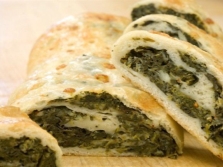
green oil
You will need a few sprigs of parsley, chervil and mint.
All herbs must be finely chopped and mixed with butter, lightly salt and add a few drops of lemon juice, mix all the ingredients thoroughly.
Wrap the resulting mass with cling film and send to the refrigerator. When it hardens a little, it is ready for use.
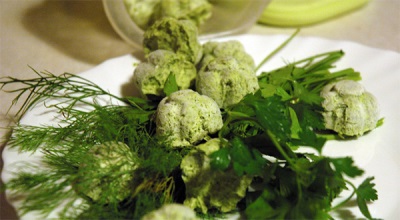
Curd
To prepare a savory curd mass, pass the curd through a sieve, salt, pepper, add a few chopped sprigs of mint and chervil. In order for the mass to be more elastic, you can add a little sour cream.
If you like a more piquant taste to the curd mass, you can add a little chervil root grated on a fine grater and a clove of garlic passed through a press.

Soup
In the spring, you can make a light and vitamin-rich soup.
You will need: 1 liter chicken broth, 100 gr. sorrel, 1 carrot, 50 gr. green onions, 3 boiled eggs, 10 gr. parsley, chervil and dill, 2 tbsp. spoons of green peas, 2 tbsp. tablespoons of butter.
The sorrel must be washed. Bring the broth to a boil until it boils, chop all the greens, and grate the carrots.Heat the butter in a frying pan, fry the carrots and sorrel in it a little. Add chopped onion and sorrel with carrots to the boiling broth. Cook for 5-7 minutes over low heat. Chop the eggs and add to the broth. Now we lay all the remaining greens in the broth and cook for about 1 minute.

Tips from the chef
In combination with other herbs and seasonings, for example, as part of the "bouquet garni", chervil, when added to the broth, gives it a sweetish taste and a slight anise aroma.
Add some chervil to mashed potatoes or spice up omelettes to give a new flavor to familiar dishes.
Chervil is especially popular with French culinary specialists, its delicate taste and delicate smell are to the taste of true gourmets. Just keep in mind that it is best to use freshly harvested grass, because when dry, it loses its beneficial and organoleptic properties.
Sauce for meat
For meat, you can prepare a sauce with chervil from eggs, vinegar, sugar, salt, vegetable oil and chervil. This sauce is similar in taste to mayonnaise, but more tender and spicy.
Chervil works great with other spices and herbs such as:
- tarragon,
- parsley,
- various varieties of green onions,
- mint,
- salad greens.


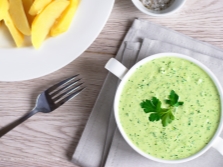
In medicine
Traditional healers actively use chervil in their recipes. For the preparation of infusions, decoctions and other preparations, leaves, seeds and rhizomes of the plant are used.
Kervel helps:
- with diseases of the gastrointestinal tract;
- normalize metabolism;
- with diseases of the kidneys and liver;
- with cholelithiasis;
- for skin diseases: eczema, lichen, dermatoses, furunculosis;
- healing of wounds and bruises;
- normalize blood pressure;
- purify the blood, successfully fights bad cholesterol;
- with fatigue, depression, stimulates the brain;
- with gout;
- for colds, has astringent and expectorant action;
- boost immunity.
Fresh crushed chervil leaves are used to prepare lotions for skin inflammations, lichen, for healing wounds and bruises, for the treatment of boils and acne. Also lotions will be effective in the treatment of arthritis and gout.

Teas and decoctions from chervil leaves help stimulate metabolic processes in the body, remove toxins and increase immunity.
To prepare an infusion that will help with diseases of the kidneys and liver, relieve depression and tones the body, pour two tablespoons of dried crushed chervil leaves with a glass of boiling water and insist in a thermos for about an hour.
It is necessary to use the infusion half an hour before meals, a quarter cup three to four times a day.
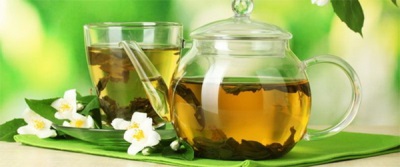
When losing weight
- activates metabolism;
- tones;
- helps to remove toxins and toxins from the body;
- boosts immunity.
Due to its chemical composition, chervil will increase immunity and normalize metabolic processes in the body. Daily use of this herb in the spring months will help to actively lose extra pounds, and enrich the body with useful vitamins, minerals and biologically active substances.

Everyone knows that fat, which is deposited not only under the skin, but also on the internal organs of a person and is not burned, produces harmful toxins, provokes the development of diabetes and can activate the development of cancer cells.
Chervil will help fight toxins, it will help cleanse the blood and remove toxins from the body, while having a beneficial effect on the liver. In addition, chervil has a slight diuretic effect, which will help remove excess fluid from the body.
For active weight loss, you need to prepare an infusion according to the following recipe. One tablespoon of dry chervil leaves should be poured with one glass of boiling water and insisted for an hour in a thermos. Ready infusion strain.
You need to drink ready-made infusion throughout the day in equal parts between meals. Preferably one hour before meals or one hour after meals.

In cosmetology
Chervil extract is part of various creams for the care of problem skin of the face and body. Creams have a therapeutic and tonic effect on the epidermis and deep skin.
Other
- as a means to fight ants, a few branches spread out in the house or in the country will scare away the ants;
- in industrial production: alcoholic beverages and meat products.
Juice
The juice of fresh leaves of the plant is an excellent expectorant for colds. Moreover, it will help with inflammation of the lymph nodes.
Cough will stop tormenting you if you add 35 drops of juice to half a glass of warm water and drink before meals. The procedure must be repeated three to four times a day. Chervil juice prepared in this way will not only relieve cough, but also purify the blood and become a strong immune stimulant.

The juice can also be used as a salad dressing.
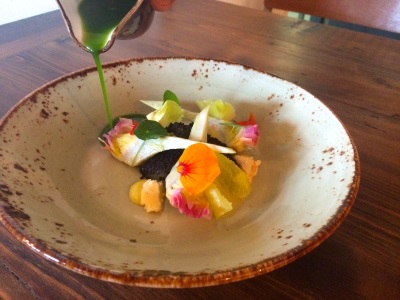
Essential oil
Chervil aromatic oil is obtained from the seeds of the plant by steam distillation.
The oil has been used:
- in the food industry in the production of meat products,
- in the production of alcoholic and non-alcoholic beverages.
At home and for therapeutic purposes, the oil should be used with caution, since it is based on methylcavicol, a toxic and carcinogenic chemical compound.
cultivation
Chervil is an annual plant, does not like waterlogged soils, can grow in the shade, does not require constant care. The plant calmly tolerates cold, so it can be sown in early spring.
Seeds do not require deep penetration, 0.5-1 cm is enough. They are sown according to the principle of planting parsley - according to the scheme 20 by 30 cm. When the grass begins to sprout and young sprouts rise 7-10 cm, they will need to be thinned out, leaving 10-15 centimeters between neighboring plants.
After a month, you will be able to enjoy fresh and fragrant herbs. The plant can be sown on seeds for the winter, as the seeds ripen three to four months after the plant sprouts.
Seed plants are cut near the ground and dried seeds down. Seeds retain their properties and ability to sow for two to three years.

Interesting Facts
In Russia, chervil was used not only as a medicinal plant and aromatic seasoning, but also wine was made on its basis. The grass grew wild and was available to everyone.


















When I first saw it, I thought it was parsley.